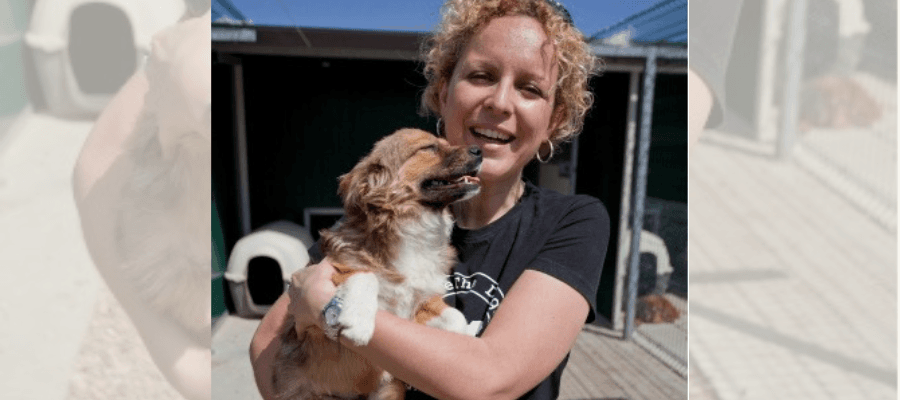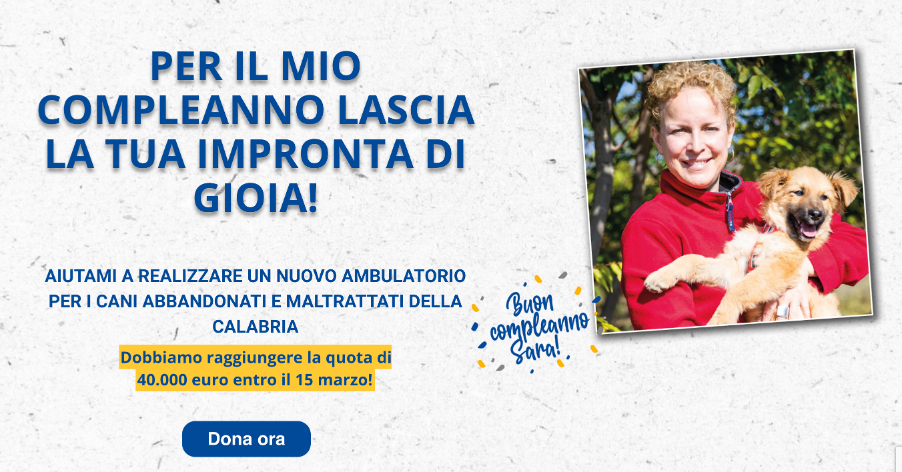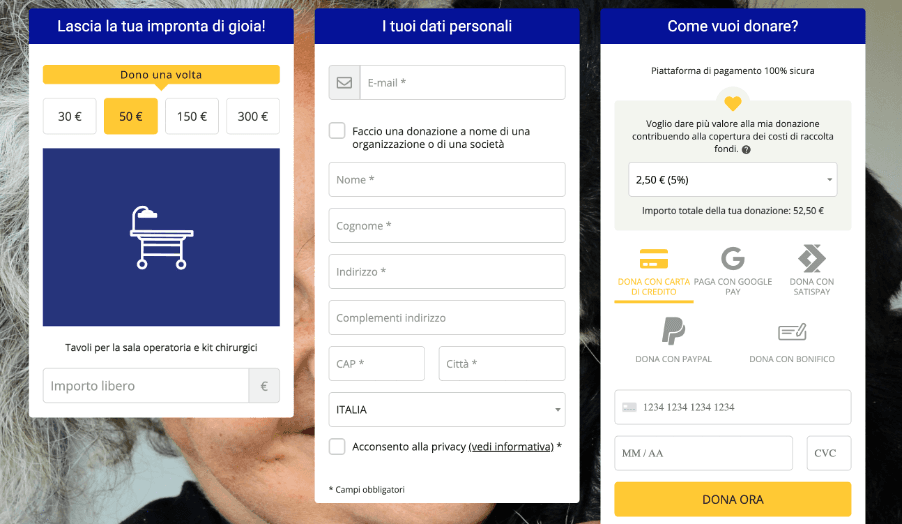How Save the Dogs used a founder’s birthday for fundraising success
Discover a multi-channel campaign that helped an Italian charity raise enough money to build a shelter for stray dogs.
- Written by
- Veronica Parise & Vania Pavan
- Added
- July 09, 2018

*EDITORS NOTE:
This case study was written for you by Veronica Parise and Vania Pavan as part of SOFII’s collaboration with the Italian Association of Fundraisers (ASSIF) – a partnership that aims to bring inspirational Italian fundraising to fundraisers worldwide. The article was revised by the SOFII editorial team.
Introduction from the authors
In Italy, during the summer (when many people go on holiday), appeals from organisations that deal with the protection of animals usually multiply. Most of these appeals seek to help dogs and cats who have been abandoned.
And for those who truly love and respect animals, this is incomprehensible behaviour.
In the history of humanity, the relationship with animals in many cases has gone beyond mere exploitation of the ‘beast’ as a species to be domesticated. In some traditional societies, for example, the shepherd received great aesthetic pleasure from the contemplation of the herds that he lovingly took care of.
In scientific literature, the benefits of interaction between humans and animals and the therapeutic effects that the proximity of an animal can bring are numerous. In fact, the effects of ‘pet therapy’ have been scientifically verified.
Therefore, it is not surprising how many people are dedicated to the welfare of the animal kingdom.
Who are Save the Dogs and why do we admire this charity?
Save the Dogs and other Animals Onlus is a charity working to protect dogs. You can view a short video about how and why the organisation was born, here.
There are many organisations that are committed to the wellness of our four-legged friends, but we were struck by the work of Save the Dogs and other Animals Onlus (aka Save the Dogs). The association was founded in Italy in 2002 and has been operating in Romania for 20 years – where stray dogs are a huge problem. They have also, more recently, begun helping stray dogs throughout war-torn Ukraine.
However, for quite a few years, Save the Dogs have had an annual fundraising campaign which marks the birthday of their president and founder Sara Turetta.
Often, we are told in fundraising that anniversaries or birthdays might not matter to our donors – and to use these carefully in campaigns – but what stood out most to us was how the charity transformed this special occasion into a great vehicle for their fundraising.
Save the Dogs prepared their campaign exceptionally well. They used good profiling and targeting to identify key points that could be used to energise different target donor groups. These key points were:
• an affiliation with the charity’s president, Sara Turetta
• a clear fundraising objective
• a deadline for the campaign
• a reward for donors
• targeted communications
• a high-quality solution/intervention to help the animals
• and the fact that this was an emergency for the animals affected
So, what did this campaign look like?

The birthday campaign was multi-channel and focused on multiple areas of fundraising: direct mail, digital messages, text messages and use of social platforms.
Digital ads on social media were used to capture the attention of active, or warm donors. These ads included a video of the president, Sara Turetta, talking to donors.
For cold or inactive donors and prospects, Save the Dogs sent email or text messages that directed them to a landing page (with donation form) on the organisation’s homepage. This messaging focused on the extreme vulnerability of stray dogs. Meanwhile, a direct mail campaign accompanied by three digital messages was sent to active donors. Save the Dogs then went even further by sending a brochure to their major donors.
Once the potential donors were identified, the ‘different communication keys’ had to be understood, i.e., discovering ‘why’ each person would make their donation.
Thanks to this activity, expectations were exceeded, and the campaign was a big success!

How did Save the Dogs recognise the donors who supported the campaign?
Once a donation was made, the donor’s name was included on a panel, with over 1000 other kind people, on the walls of the new clinic building. This emphasised the strong call to action: a sort of stunning wall of fame. This helped create a strong sense of community.

The campaign ran for a month and ended with a thank you mailing dedicated to donors. Total donations exceeded €40,000! This was an incredible 153 per cent more than the previous year.
What did we learn from this campaign?
We believe this shows that, by analysing different elements within the same campaign, it is possible to identify multiple levers to be used on different donor groups and at different moments in the development of the campaign itself.
But that’s not all: have you ever heard of the ‘effective altruism’ movement?
It is an almost unknown movement in Italy, but it means that each of us has the moral obligation to improve the world we live in by acting rationally and effectively. It is therefore not only a question of donating out of ‘moral obligation’, it shows that each of us also worry about the effectiveness of our donation.
Of course, this means donors pay close attention to the work of non-profit organisations and charities. An organisation is seen to be more effective if it manages to change people’s daily behaviour and consumption.
Save the Dogs does this through its ‘Non uno di troppo’ (Not one is too much) programme (active sterilisation of stray dogs in Calabria and Campania, Italy). The programme aims to save many more animals by making people aware of the importance of sterilisation as a fundamental tool to reduce the number of strays.
Save the Dogs deals with stray dogs and responsible ownership by disseminating and educating people to take responsibility for their pets with the diffusion of awareness materials: an excellent example of how the behavioural impact can then be translated into collective well-being.
So, if an Italian donor hears a dog barking or a cat meowing in Calabria, Campania, Romania or even Ukraine, they could in fact be hearing the words ‘thank you’!


















